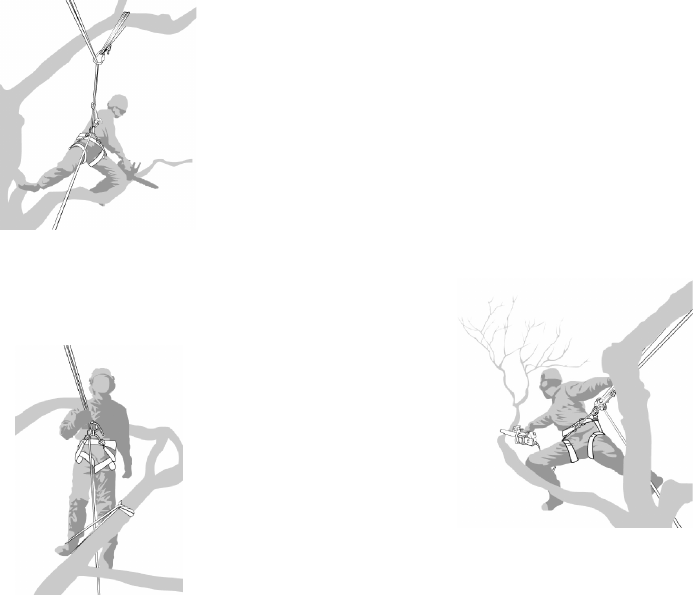
G2000T
GB-6
Gaining a good footing at the working position can be
assisted by use of a temporary foot stirrup created from
an endless sling.
Starting the saw in the tree
When starting the saw in the tree, the operator should:
a) apply the chain brake before starting;
b) hold saw on either the left or right of the body when
starting:
1) on the left side hold the saw with either the left hand
on the front handle or the right hand on the rear
handle and thrust the saw away from the body while
holding the pull starter cord in the other hand;
2) on the right side, hold the saw with the right hand on
either handle and thrust the saw away from the body
while holding the pull starter cord in the left hand.
The chain brake should always be engaged before low-
ering a running saw onto its strop.
Operators should always check the saw has sufficient
fuel before undertaking critical cuts.
One-hand use of the chainsaw
Operators should not use tree service chainsaws one-
handed in place of unstable work positioning or in pref-
erence to a handsaw when cutting small diameter wood
at the branch tips.
Tree service chainsaws should only be used one-handed
where:
• the operator cannot gain a work position enabling two-
handed use; and
• they need to support their working position with one
hand; and
• the saw is being used at full stretch, at right angles to
and out of line with the operator’s body.
Operators should never:
• cut with the kickback zone at the tip of the chainsaw
guide bar
• ‘hold and cut’ sections
•attempt to catch falling sections.
Freeing a trapped saw
If the saw should become trapped during cutting, op-
erators should:
• switch off the saw and attach it securely to the tree
inboard (i.e. towards the truck side) of the cut or to a
separate tool line;
• pull the saw from the kerf whilst lifting the branch as
necessary;
• if necessary, use a handsaw or second chain saw to
release the trapped saw by cutting a minimum of 30
cm away from the trapped saw.
Whether a handsaw or a chainsaw is used to free a stuck
saw, the release cuts should always be outboard (to-
ward the tips of the branch), in order to prevent the saw
being taken with the section and further complicating
the situation.


















